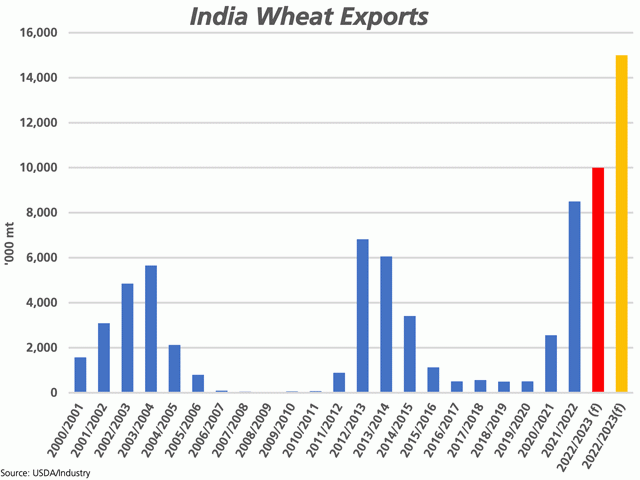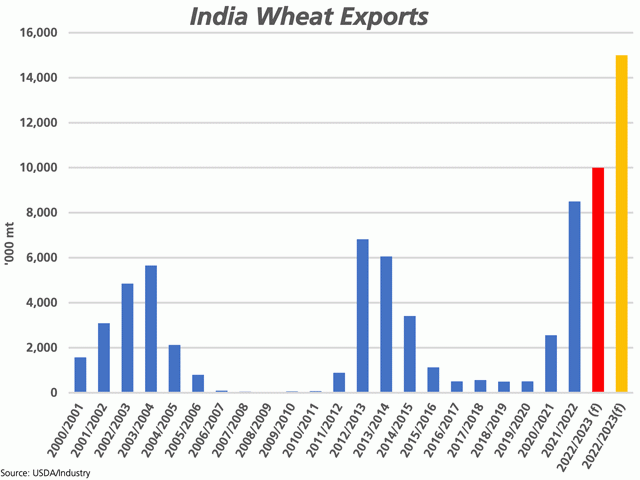Canada Markets
India Seeks to Increase Wheat Exports
World-Grain.com quoted Qu Dongyu, director-general of the United Nations, who stated in an opinion piece, "Over the past two years, COVID-19 has presented many challenges to global food security," he said. "Today, what is happening in Russia and Ukraine adds another significant challenge. Russia and Ukraine play a substantial role in the global food production and supply. Russia is the world's largest exporter of wheat, and Ukraine is the fifth largest."
While the majority of press is focused on how the world's major exporters will react to help fill in shortfalls, media is reporting today how India, the world's second-largest wheat producer, could play a role to help meet global shortfalls.
Media is reporting this week that government sources are stating that quick moves are taking place to increase the number of government-approved testing labs, increase rail capacity, work with ports to gain priority service for wheat, increase storage capacity at ports and even add ports on the east side of the country that typically do not handle wheat. According to the Economictimes.com, some of these measures "should be implemented over the course of two weeks."
P[L1] D[0x0] M[300x250] OOP[F] ADUNIT[] T[]
The USDA's March World Agricultural Supply and Demand Estimates (WASDE) report estimated India's 2021-22 exports at 8.5 million metric tons (mmt), up 232% from the 2.561 mmt for the 2020-21 crop year and 817% higher than the five-year average of 927,200 metric tons (mt). The current forecast includes 25.415 mmt of ending stocks, down slightly from the previous crop year but still sharply higher than the five-year average of 18.5 mmt and the 10-year average of 18.6 mmt.
Of course, it won't be totally smooth sailing, with historical logistical challenges and quality a factor limiting exports.
The red bar on the attached chart indicates 10 mmt of exports for 2022-23, which the Economic Times reports as the target the government is indicating. A Twitter post from AgPulse Analytica has stated that India has the potential to export 25 mmt, while AgPulse Analytica is forecasting a more likely range of between 10 mmt and 15 mmt, as indicated by the yellow bar on the attached chart.
A volume in this range could see India enter the group of the top eight exporters in 2022-23, while the potential for a long-term structural change to export flows exists.
Cliff Jamieson can be reached at cliff.jamieson@dtn.com
Follow him on Twitter @Cliff Jamieson
(c) Copyright 2022 DTN, LLC. All rights reserved.






Comments
To comment, please Log In or Join our Community .